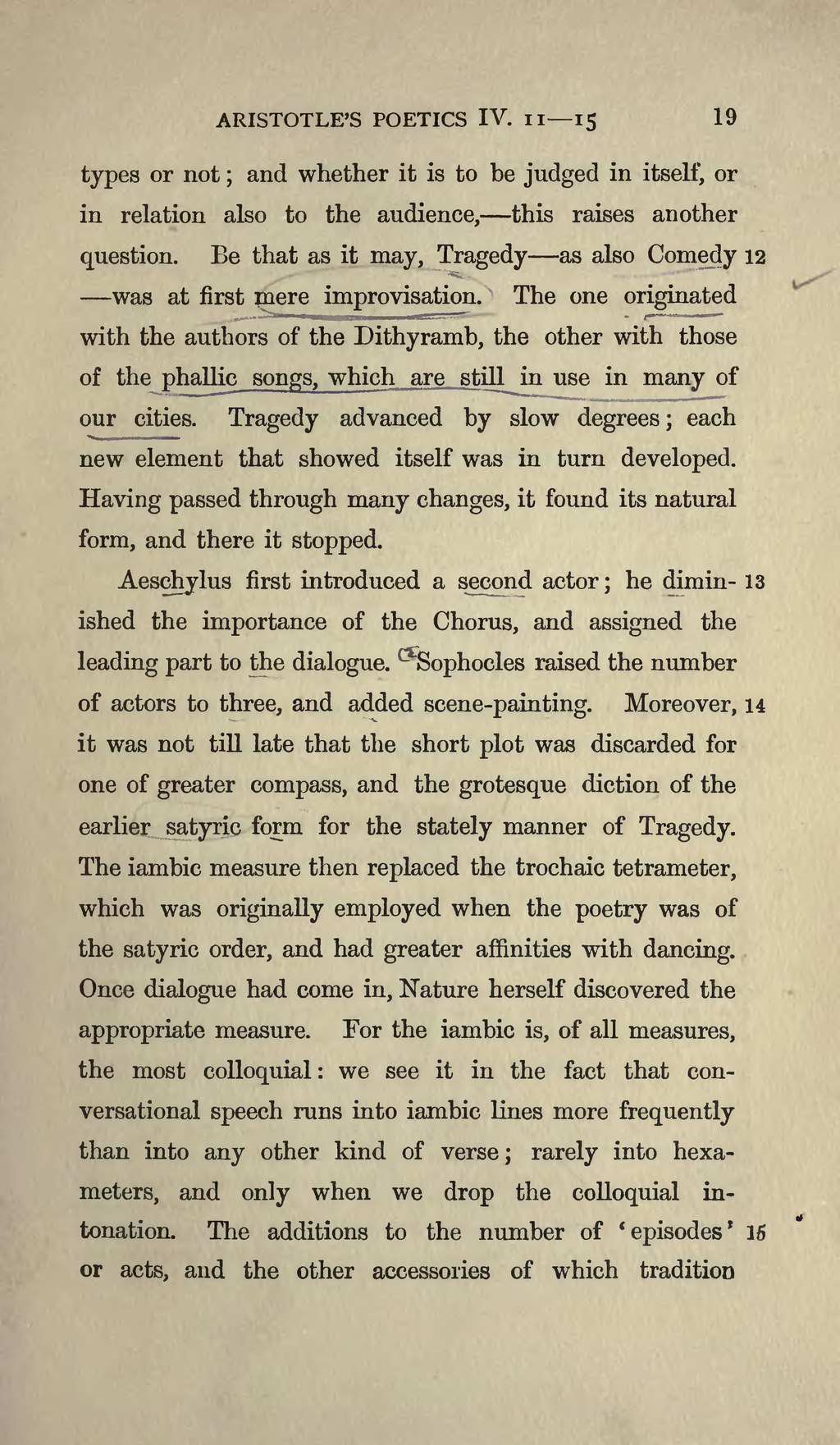types or not; and whether it is to be judged in itself, or in relation also to the audience—this raises another question. Be that as it may, Tragedy—as also Comedy—was at first mere improvisation. The one originated with the authors of the Dithyramb, the other with those of the phallic songs, which are still in use in many of our cities. Tragedy advanced by slow degrees; each new element that showed itself was in turn developed. Having passed through many changes, it found its natural form, and there it stopped.
Aeschylus first introduced a second actor; he diminished the importance of the Chorus, and assigned the leading part to the dialogue. Sophocles raised the number of actors to three, and added scene-painting. Moreover, it was not till late that the short plot was discarded for one of greater compass, and the grotesque diction of the earlier satyric form for the stately manner of Tragedy. The iambic measure then replaced the trochaic tetrameter, which was originally employed when the poetry was of the satyric order, and had greater with dancing. Once dialogue had come in, Nature herself discovered the appropriate measure. For the iambic is, of all measures, the most colloquial we see it in the fact that conversational speech runs into iambic lines more frequently than into any other kind of verse; rarely into hexameters, and only when we drop the colloquial intonation. The additions to the number of 'episodes' or acts, and the other accessories of which tradition
